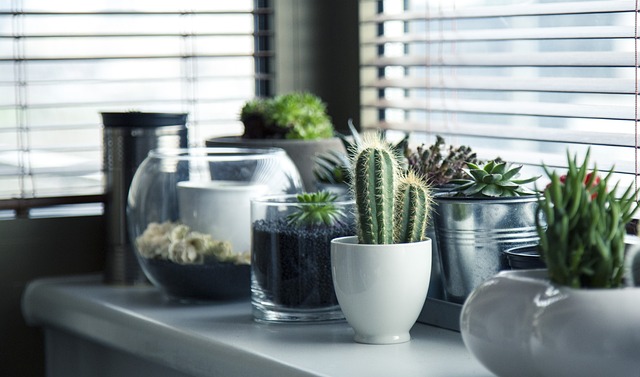The cactus root system differs from the root systems of other plants, and if you want a lush and thriving group of cacti, it’s important to understand how they differ. Without this knowledge, you could accidentally kill your cactus plant because what works with other plants will lead to root rot with a cactus. Let’s take a look at the surprising things you don’t know about the cactus and its roots.
#1: Cactus Roots Grow Horizontally
When you look at the date palm, its roots grow downward. When you look at legumes, their roots grow downward and sideways. How cactus roots differ is that they don’t go down very deep, and they grow sideways compared to downward.
The reason behind this is a brilliant intelligence on the plant’s part. Roots don’t grow where there is no moisture. When in the desert, you experience brief and infrequent showers. They only wet a few inches of the soil and roots right below the surface allow it to get the maximum intake of water because it covers a larger area.
To put this into perspective, their roots can grow up to 15 feet out near the surface, but they will collect water whenever it rains. How deep are cactus roots? Normally, cactus roots will only go down 5 to 10 inches.
Out in the wild, they might go down 3 feet, but that doesn’t compare to a willow tree, which can go down over 100 feet in search of water. All plant roots follow the path of water in their natural habitat.
How deep the cactus roots grow and even how they grow will depend on the cactus species.
Related article: Why is My Cactus Turning Purple?
#2: Collecting the Essentials through the Roots and Stealing from Rivals!
Cactus roots might be shallow, but don’t think for a second this makes them ineffective! In fact, this becomes its competitive advantage out in the wild where it will collect water and other essential nutrients from the soil. Their shallow and expansive root systems will take in water before it can reach the deeper roots of other desert plants. This is, in fact, a common tactic of the Saguaro cactus.
Many times, you will see the Saguaro sprout from the seeds in the protective cover of a palo verde bush. The cactus will use this bush as cover, but once it reaches about 4 feet in height, it sends out roots in all four directions at up to several feet outward to collect the water right at the surface.
Effectively, it steals water from plants that would have otherwise received the water, but their roots went too deep down. The cactus begins to grow faster and soon, the bush dies because of the lack of water. Once this happens, the cactus will take all the water for itself.

Many don’t realize the competitive intelligence and the wonder behind nature. If you’d like to learn more about this topic in a fascinating way that will leave you truly awestruck as it did me, I invite you to check out the book, The Hidden Life of Trees. You will learn just how competitive and intelligent actually are. I loved how this book covers the true intelligence of mother nature.
#3: Fully Dried the Plant Cycle for Cactus Roots
Most plants when you leave them unwatered, will die or reach a sickly state. Cactus roots differ in that they need to dry out before they receive more water, or it will cause root rot. The roots of the cactus are used to having little water, and they need it as part of a cycle. When the roots dry out, they will start to wither, but this is necessary for them to follow the usual cycle.
When the water comes in the desert, it often comes heavy, and it will take in as much water during that time as possible before going back to another dry season.
As a side note, since I mentioned root rot, you can tell that your cactus has root rot when the plant has a soft and brown tissue. Never use regular soil for a cactus. Your cactus needs soil that will dry the water fast to prevent root rot from happening.
Related article: Why are My Cactus Spines Turning Brown?
#4: Cactus Roots Store How Much Water?
You won’t believe this! How much they can store depends on the cactus species, but cactus roots can store up to 200 gallons of water in their root systems. In fact, the Saguaro cactus stores up to 1,000 gallons of water.
Even during extreme dry spells out in the Sonoran desert, it can still pull from its stores of water to grow and produce flowers and seeds. When it has been fully loaded with water, this cactus may not need to absorb anymore water for up to a year. Compare that with other plants that need water constantly, and you can appreciate how hardy this plant is.
Just keep in mind, the indoor variety of cacti usually require a slightly more frequent watering than that since their root systems aren’t nearly as advanced. An indoor variety, depending on the species, might survive for six months without water, but most will need water even more than that because they don’t store as much water as those out in the wild.
Cacti will store water in their stems and the enlarged roots called the taproot.
#5: The Different Types of Roots and What You Don’t Know
When it comes to cacti, there are four main types of roots that you will encounter that include:
- Taproots
- Fibrous roots
- Napiform roots
- Tuberous roots
Taproots
You can spot a taproot because it’s straight and thick. Most of the time, taproots will grow straight down to absorb the water deeper down. On a cactus, the taproot usually serves as an anchor to keep the plant from washing away during heavy storms.
It depends on the species because some cacti won’t have a taproot. Examples of cacti that will have a taproot include the Saguaro and the Mexican Cereus.
Fibrous Roots
Fibrous root systems on the cactus are very common. The fibrous root systems won’t delve deep into the ground. Their root systems will often spread out far sideways to collect as much water as possible over a large surface area. How these roots are will depend on the species of cactus. For example, the ball cactus collects the morning dew with its shorter waters.
With a fibrous root system, you have two types: First, you have primary roots and second you have lateral roots. The primary root usually starts at seeding, and during its growth, it will form secondary branches.
Lateral roots are the other root system. This is also known as the secondary root system, and these roots often grow in unusual places.
Napiform Roots
You can spot a napiform root because it looks like a turnip. They’re large and round at the top, but they will be slender at the bottom. Napiform roots do not penetrate into the earth deeply, and their purpose is to absorb water as fast as possible. Many times, the roots will absorb water in as little as a few seconds.
One example of a cactus that has this root system is known as the Anhalonium leuchtenbergii.
Tuberous Roots
Tuberous roots are thick and fleshy, and they act as a storage system for the cactus. This root will have fine hairs on it that absorb water. You know you have a tuberous root system when the roots like like tubers, but they’re swollen. They absorb the nutrients at the thick and fleshy part of the roots.
To put everything into perspective, over 235 cactus species have a tuberous root system, so it’s a fairly common root system.
#6: The Roots Can Tell You the Health of Your Cactus
Did you know that you can tell the health of your cactus based on the root system. Generally speaking, when your cactus has white roots, you have a healthy plant. You can tell when your cactus is not in good condition if the roots look brown or black. They may even have this mushy texture to it that indicates your roots are rotting.

Another sign is to look at the plant itself. Whenever it has root rot, the plant will start to turn yellow or brown at the base.
You need to correct root rot as early as possible because if uncorrected, it will kill your plant. Usually, as long as it hasn’t attracted pests, fixing root rot in a cactus is as simple as putting it into new soil that has good drainage.
Most often when root rot occurs, it happens because of poor drainage that holds in the water. A cactus cannot handle being in water for too long, which will kill it from root rot.
Related article: Why is My Cactus Turning Red?
Conclusion
Hopefully, you learned something interesting about the cactus root system that will help you with growing your cacti. Just keep in mind that when I speak about cactus roots in this way, I’m speaking on a general level. You want to study your own species of cactus carefully to know its unique personality. Most cactus, however, (I can’t think of a single one) won’t like to be left in water for too long.


3 thoughts on “Cactus Root System: 6 Things That Will Surprise You!”